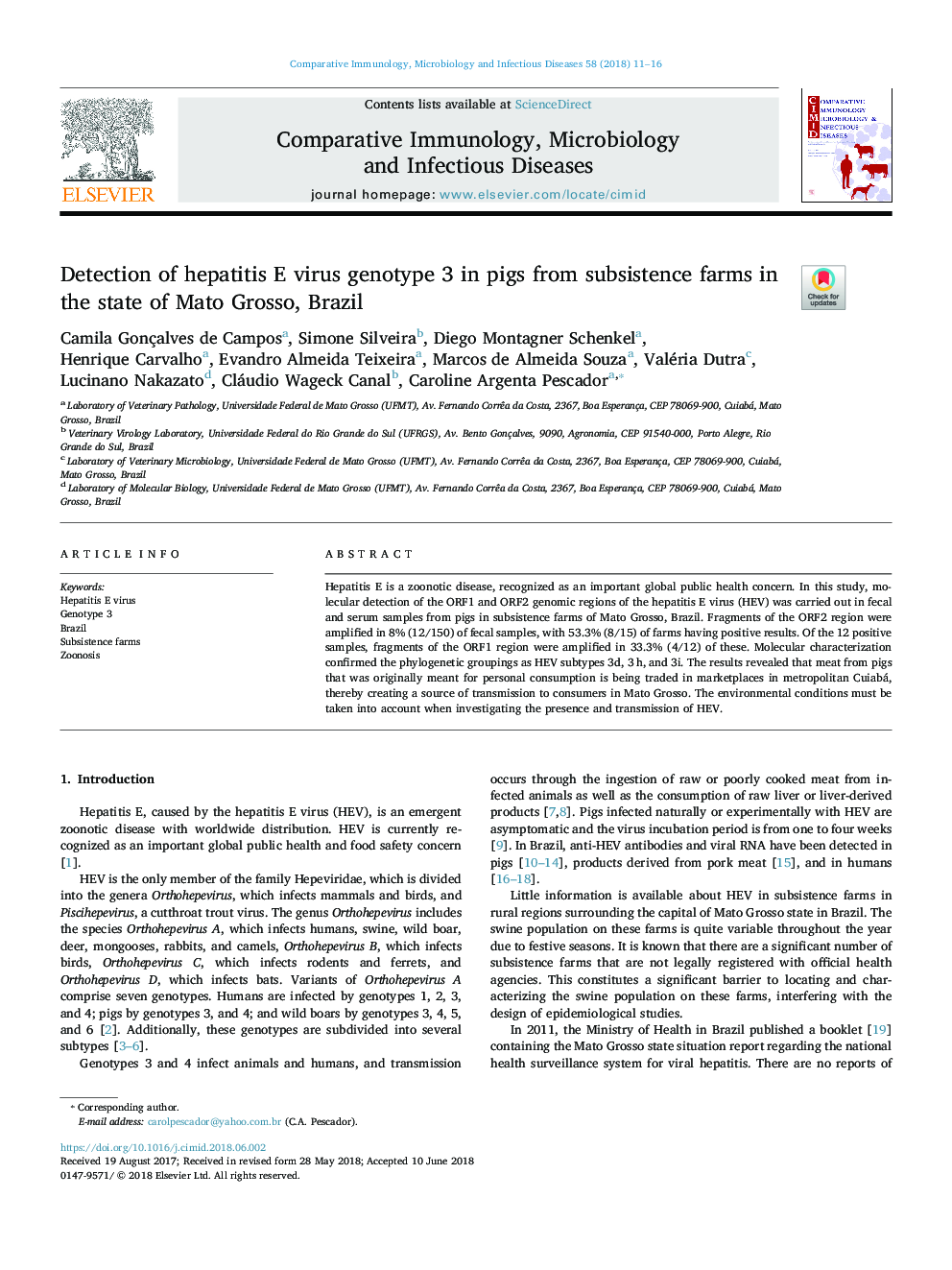| Article ID | Journal | Published Year | Pages | File Type |
|---|---|---|---|---|
| 8497520 | Comparative Immunology, Microbiology and Infectious Diseases | 2018 | 6 Pages |
Abstract
Hepatitis E is a zoonotic disease, recognized as an important global public health concern. In this study, molecular detection of the ORF1 and ORF2 genomic regions of the hepatitis E virus (HEV) was carried out in fecal and serum samples from pigs in subsistence farms of Mato Grosso, Brazil. Fragments of the ORF2 region were amplified in 8% (12/150) of fecal samples, with 53.3% (8/15) of farms having positive results. Of the 12 positive samples, fragments of the ORF1 region were amplified in 33.3% (4/12) of these. Molecular characterization confirmed the phylogenetic groupings as HEV subtypes 3d, 3â¯h, and 3i. The results revealed that meat from pigs that was originally meant for personal consumption is being traded in marketplaces in metropolitan Cuiabá, thereby creating a source of transmission to consumers in Mato Grosso. The environmental conditions must be taken into account when investigating the presence and transmission of HEV.
Related Topics
Life Sciences
Agricultural and Biological Sciences
Animal Science and Zoology
Authors
Camila Gonçalves de Campos, Simone Silveira, Diego Montagner Schenkel, Henrique Carvalho, Evandro Almeida Teixeira, Marcos de Almeida Souza, Valéria Dutra, Lucinano Nakazato, Cláudio Wageck Canal, Caroline Argenta Pescador,
